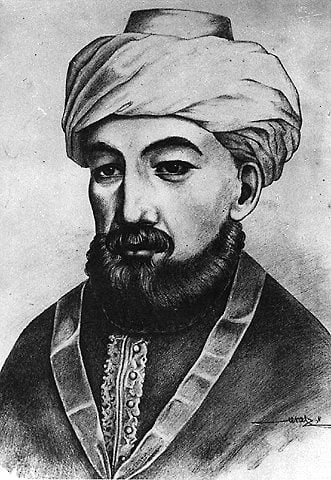In a new Israeli Reality Show “Married at First Sight”, couples meet for the first time at their wedding. 250 years ago, this format was an acceptable practice, having quite the same motives – mostly financial ones.
Our tragic hero had such an experience. Salomon Ben Yehoshua was born in 1753 in the town of Nieswiez, Lithuania. He was an exceptional famous “Iluy” (Torah and Talmudic prodigy), which automatically made him a most desirable match. Unfortunately, his father had financial problems which he wished to solve by marrying his son at the very young age of 11. One (allegedly wealthy) widow from a neighboring offered him a large dowry to have him marry his son to her daughter. The young boy found himself in somewhat a scary fairy tale, unwillingly married unto a girl his age, and living with her evil abusive charlatan mother, who did not even pay the sums she had promised to pay.

The miserable boy found refuge in his studies, to which he was devoted entirely. He came across “The Guide for the Perplexed” by Maimonides (Maimon) in his father’s library and was inflamed with wisdom and passion for learning. He also adopted – being both a genius and a narcissist – the name Maimon, and from then onward was called Salomon Maimon.
After Maimonides he went on to read Spinoza, learned German on his own and delved into the great philosophers of his time, such as Kant, Leibniz, and Hamann, while supporting his wife and mother in law as a melamed for children of rich people. Three years after his marriage, when he was only 14, his first son, David, was born. “Knowing nothing about the duties of a married man, naturally it was quite a while before I could perform them”, he wrote in his autobiography, in which he described his unusual life course. He also claimed to have learnt the secrets of sex from an unfamiliar witch who came to town.
His passion for philosophy and studying overcame any sense of family obligations, and eventually he decided to walk out of his young wife and son, and go “seeking for the truth”.

His first Alma Mater was the court of the Maggid of Mezritch, one of the earliest leaders of Chasidism, and direct follower of the founder of Chasidism, the Baal Shem Tov. However to his great disappointment he found out that most of the rabbis were arrogant, spending most of their time quarreling and intriguing, he hated them and strived very hard to detect the genuine righteous ones. He was also very upset to come across ignorance, superstitious and exaggerated personality cult rather than wisdom, rationalism and profound study. Maimon’s stay at the Maggid’s court was not a complete waste of time though, as he most skillfully and brightly recorded the characteristics of the Maggid and his followers, and his account of the first Chasidic court in history served generations of researchers and scholars.
Turning his back on Chasidism, he kept traveling and searching for truth and wisdom. He arrived at Kenigsberg in Prussia and then, at 25, he reached Berlin – the world class intellectual center. He dazzled the intellectual elite headed by Moses Mendelssohn, the founding father of the enlightenment movement, who realized immediately he was facing a genius and made him his protégé. Mendelssohn introduced Maimon to all the great minds of the time, including Goethe, Schiller, Lessing, who were deeply impressed by the young bright man. However soon they came to resent him, for his polemic temper, his tendency to quarrel and slander, his drinking, and his promiscuous life style. He found himself once more lonely and secluded.

Maimon kept on wandering around Europe. He was an outstanding autodidact, author of comprehensive books on mathematics, geometry and astronomy though he had no formal education. He published a poignant criticism on Kant (“Essay on Transcendental Philosophy”) and was praised by Kant himself, who said “of all my opponents, no one understands me better than Maimon”), however once again, the more they all appreciated him, the more he was destructed by his narcissistic nature, his love affairs, his obsessive auto documentation and his everlasting contempt and disrespect towards his benefactors.
Though highly reputable, he was wretchedly poor. In spite of his brilliancy he could not establish any professional status or even hold on to a job. He was almost overtaken by despair and in while in Amsterdam he even tried to take his own life. But in 1790 his fortune took a turn for the better, when he was taken into the mansion of the German Graf von Kalckreuth in Siegersdorf, Silesia. He lived there for ten years, writing and studying, it was his most prolific decade.

It is widely agreed that Maimon’s Opus Vitae, regardless of his philosophical and theoretical works, is his autobiography, written in 1793, which was widely printed and published, and also translated to numerous languages. It is considered to be the earliest modern autobiography of the Haskala era. Maimon most virtuously unfolds the Jewish life in Eastern Europe. He portraits, with extraordinary literary skill, the Polish noblemen, blood libels, poverty, the houses, daily life of the Melamed, weddings and match makings, his life with his wife as little married children, the prayers and the mortification of Chasidim – a rare firsthand living image of the Jewish eastern European society, just before emancipation and secularization made their appearance.
Salomon Maimon died at 46 and was buried in Glogow, Germany. During his funeral, members of the local Jewish community stoned his coffin. Declared a heretic, he was buried outside the community burial plot – an outsider in both is life and death.